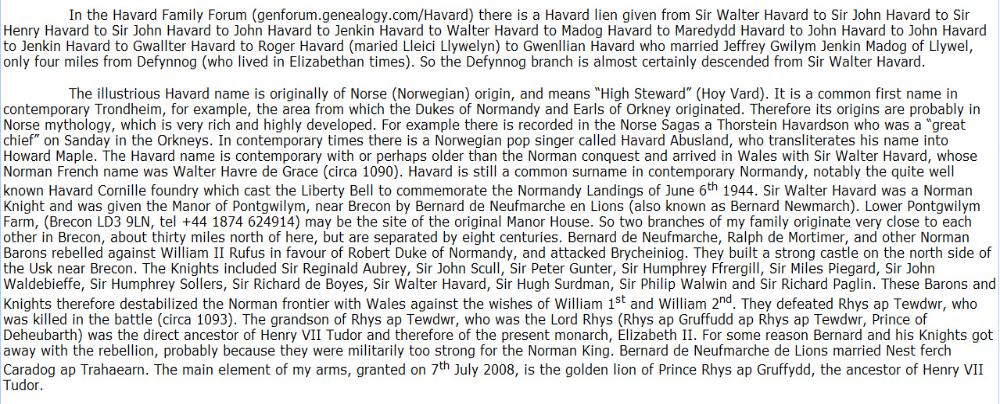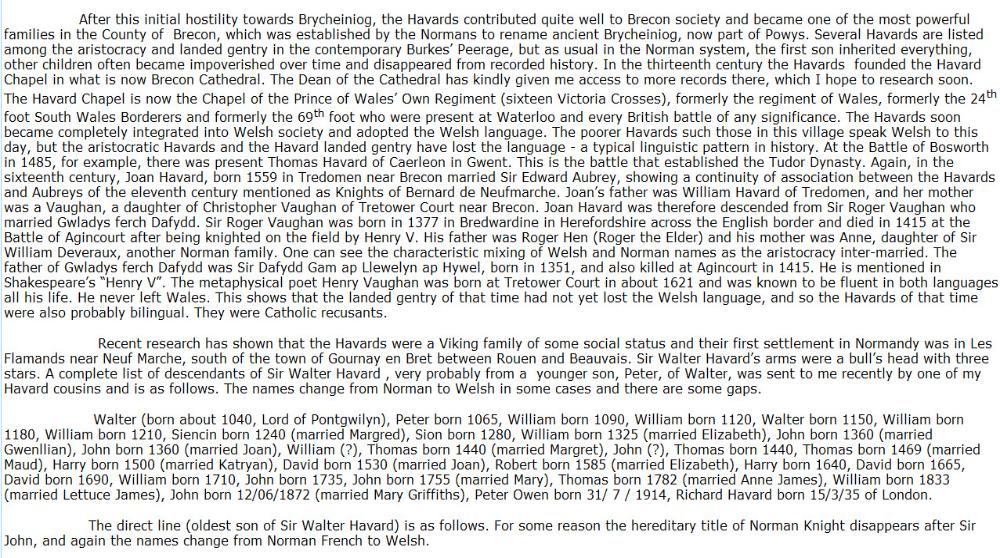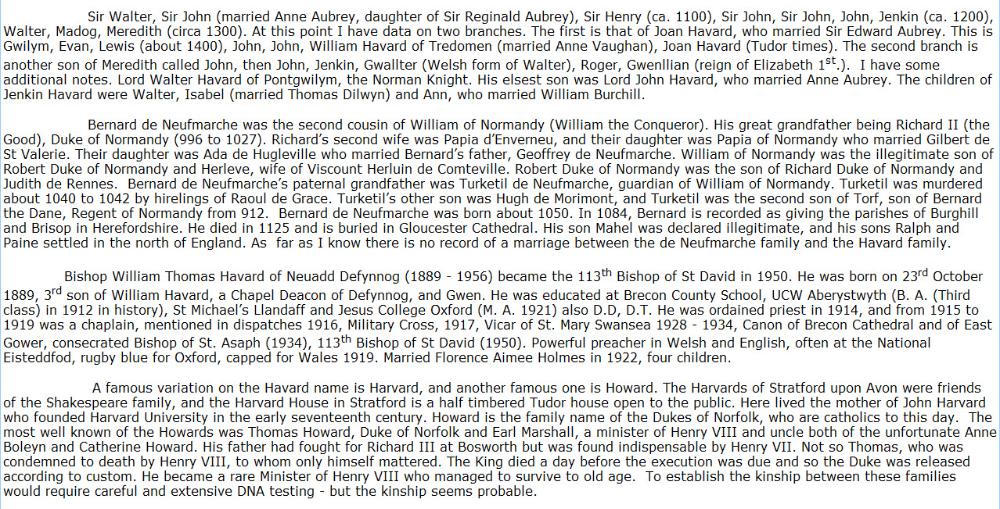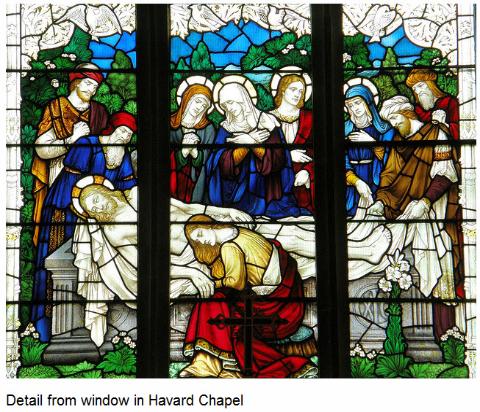The Norwegian & Welsh Connection
Click any area below to read a more detailed Brecon, Wales Havard history.... Myron Evans recounts the Norwegian & Welsh connection....





Click the Havard Chapel window on the right to visit Brecon Cathedral in Wales

Beardsley, in “English & Welsh Surnames” states that the name
“Havard” is of Gothic origin but is so old that the meaning of the name
is obscured in antiquity.
Sir Gregory Havard of “Devynock” was apparently the first to adopt
the surname of “Havard.” Because of his strength and prowess in
battle, and his indomitable will, he was known as the “Bull of Brecon.”
Reputedly he was one of King Harold’s Chief Captains when the
Normans defeated the Saxons at Hastings (1066). The “Bull” was
outlawed and his estate (Devy nock) was confiscated. However the
Havards later reacquired Devynock and it is still owned by the family.
For further reference see: Burke’s “General Armourie,” Debrett’s
“Gen eral Armoury,” Fairbain’s “Books of Family Crests” and Boutell’s
“Manual of Heraldry.”
Theophilus Jones, in his “History of the County of Brecknockshire
(Wales)” states that several of the pedigrees of the Havard family of
Wales show that Bernard Newmarch was a uterine brother of William
the Con queror (but this assertion is not confirmed by English
historians); that after Bleddign was defeated, Bernard Newmarch
followed feudal custom and dis tributed the land he had seized to the
Knights and Gentlemen who accom panied him on his expedition,
reserving to himself seigniory of the whole; and that among the
Knights and Gentlemen was Sir Walter Havard, who received the
Manor of Pontwylyn.
Jones also states that, “another family of note in Brecon and the
neigh borhood were the Havards, and though they are no longer
settled at Pon twylyn (now a farm house, about one mile northward of
the Priory), yet the Havards have multiplied and their name is more
frequently heard in Breconshire at this day, than any of the followers
of Bernard Newmarch; and as they are now so completely dispersed
that they cannot be confined to any particular precinct, the mansion
where they first settled may be considered as the proper habitation
for the purpose, at least, of introducing their genealogy.”
Jones continues, “The last resident of this name (Havard) at
Pontwylyn was Thomas Havard, Sheriff of Breconshire. In 1543,
Thomas Havard occurs as Sheriff and is described as of C Wrt Sion
Young. The site of this mansion, which appears to have been
surrounded by a mote, is apparent on the left-hand side of the road
leading to Battle, near the turnpike house.”
A booklet describing Brecon Cathedral, Brecon, South Wales, re-pub
lished in 1954, states, “The Havard Chapel was built as a Chantry
Chapel on the site of two earlier chapels in the 14th Century, by the
Havards of Pontwylyn, the most powerful family in the Parish, who
were descended from Sir Walter Havard, the Norman Knight to whom
Bernard de Newmarche gave the Manor of Pontwylyn and many
other lands, on his conquest of this country.”
The booklet continues, “—the Havards were a brave and knightly
race, much praised by our Welsh bard, Lewis Glyn Cathi, in his
poems; and some of them with Sir David Gam followed the Lord of
Brecknock, King Henry V to Agincourt. For many generations they
were buried in this chapel, though the only relic of the Havards now
remaining here is the fragment of a tomb stone bearing their arms
and motto, ‘Hope In God.’ “
When Queen Elizabeth and the Duke of Edinburgh attended church in
August, 1955, at Ancient St. David’s Cathedral, St. David, South
Wales, the Bishop of the Cathedral, Dr. W. T. Havard, delivered the
sermon.
For the genealogy of the Havard Family of the County of Brecknock
shire, see Jones’ “History of the County of Brecknockshire.” A chart
of the “History of Brecknockshire” will be found in the Havard Family
Supplement.
copied from ancestry.com…..click here for page